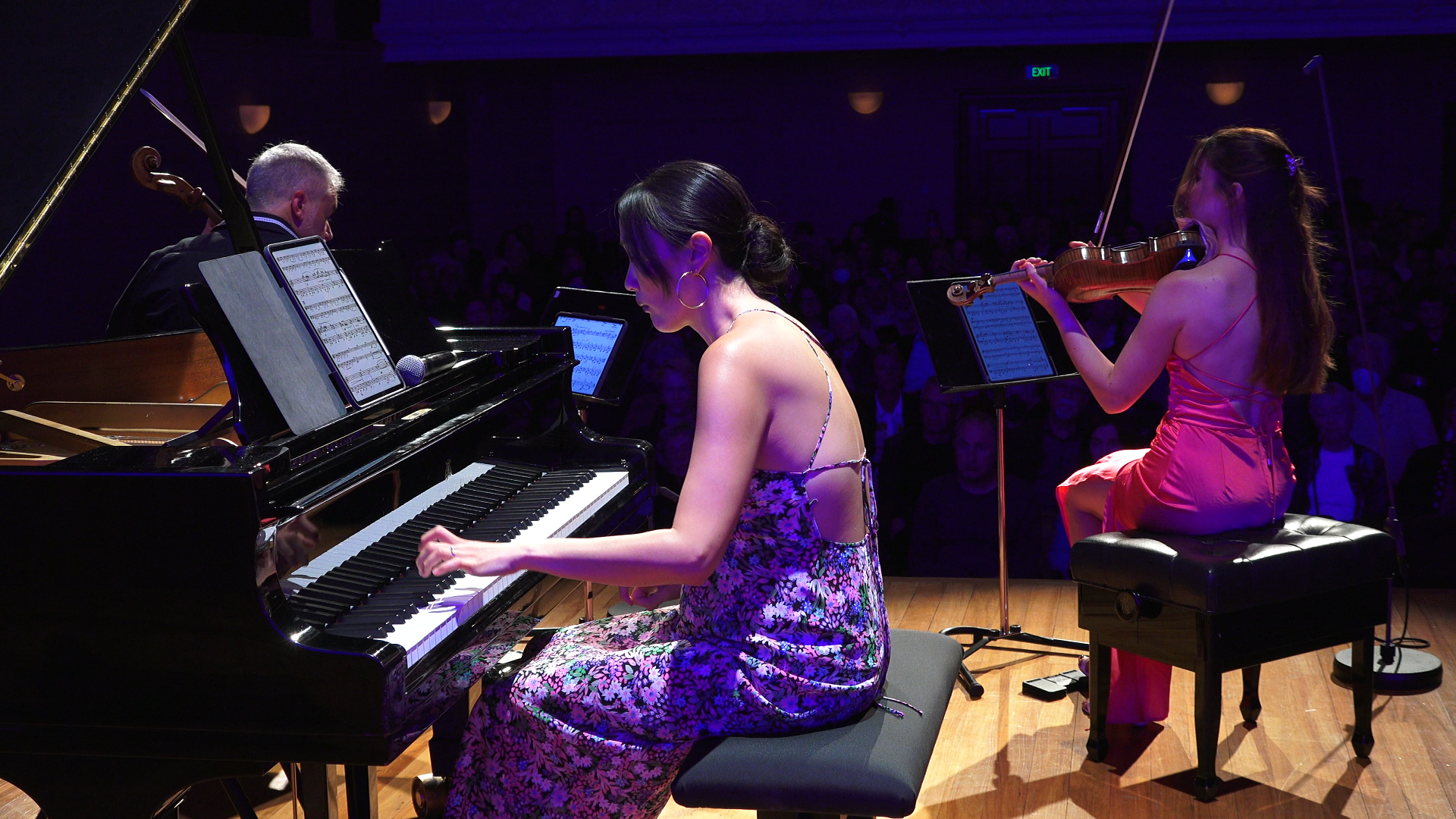NZTrio: FLARE
17nov7:00 pmNZTrio: FLAREChristchurch Arts Centre
Event Details
NZTrio: FLARE – with tenor Simon O’Neill Robert Kahn: Lieder, Opus 46 Johann Sebastian Bach: Cantata BWV 82 – Ich habe genug Juliet Palmer: Vermilion Songs (NZTrio commission and Premiere) Gustav Mahler (arr. Ken Young):
Event Details
NZTrio: FLARE – with tenor Simon O’Neill
Robert Kahn: Lieder, Opus 46
Johann Sebastian Bach: Cantata BWV 82 – Ich habe genug
Juliet Palmer: Vermilion Songs (NZTrio commission and Premiere)
Gustav Mahler (arr. Ken Young): Lieder eines fahrenden Gesellen (Songs of a Wayfarer)
Richard Strauss (arr. Alex Taylor): Four Lieder, Opus 27
FLARE throws the spotlight on NZTrio’s exciting collaboration with opera superstar Simon O’Neill. The collaboration illuminates a broad spectrum of music, including an evocative new commission from New Zealander Juliet Palmer, re-imaginings of a Bach Cantata and the charming Lieder of Robert Kahn. Fresh new arrangements of Mahler’s Songs of a Wayfarer as well as a glorious set of Richard Strauss songs complete this evening of colourful brilliance.
BOOKING INFO
Tickets for FLARE: $40/Adult, $20/Student – BOOK NOW via
Time
November 17, 2016 7:00 pm(GMT+00:00)
Location
The Great Hall, Arts Centre of Christchurch
Programme Notes
Robert KAHN (GER; 1865 – 1951): Lieder, Op. 46 – c. 8’
2. Mein Herzblut geht in Sprüngen (My heart and soul go springing)
3. Waldesnacht, du wunder kühle (The refreshing cool of the gloomy woods)
4. Wie bin ich nun in kühler Nacht (As I am now in the cooler night)
The name Robert Kahn could easily have become just another tragic statistic. It’s also a name that could have been forgotten altogether – because he was Jewish, and much of his life’s work was destroyed by the Nazis. He only just escaped with his life.
And yet, this is one of the loveliest song composers of the late romantic period, a very close friend of Brahms, who was such a fine pianist that immediately he’d graduated he was snapped up by the Leipzig Opera and found himself in demand with the finest musicians in Europe – the violinist Joseph Joachim, the clarinettist Richard Mühlfeld, the soprano Emmy Destinn. At the turn of the century, therefore, he was the most famous accompanist in the world. As a composer – and it was Brahms who originally approached him, not the other way around – his chamber music was performed by all the leading soloists and ensembles of the day: and as a teacher, he taught many of the leading lights of the 20th century, including pianists Arthur Rubinstein and Wilhelm Kempff, in Berlin. In recognition of his enormous contribution to music in Germany he was elected to the Prussian Academy of Arts in 1916.
And then – disaster. Hitler came to power in 1933. In 1934, he was forced to resign from the academy. His music was banned. Then, the dreadful events of ‘the fateful year’, 1938. October 5, Jewish passports were invalidated. October 27, the first mass deportation of Polish Jews. November 9, Kristallnacht. Kahn had foreseen this: in early October, he packed up his home overnight and he and his wife – both in their 70s – fled to England. There, peacefully, he spent the rest of his long life, unknown by the British, but still inexhaustibly composing. Even to this day, his estate is in the process of releasing and publishing his voluminous oeuvre. His piano works alone number over 1,000.
These songs are some of the many he wrote, in happier times, to texts by his friend Paul Heyse – the Nobel Prize winner, renowned in Germany as the greatest poet since Goethe. Published in Berlin in 1906, Op 46 sets seven in total from the collection ‘Jungbrunnen’, Fountain of Youth.
My heart and soul go springing
Wondrously cool woodland night
In the cool of night
In the moonlit night
Johann Sebastian BACH (GER; 1685 – 1750) arr. NZTrio: Cantata BWV 82 – Ich habe genug (I have enough) – c. 25’
Aria: Ich habe genug
Recitative: Ich habe genug
Aria: Schlummert ein, ihr matten Augen (Fall asleep, you weary eyes)
Recitative: Mein Gott! wenn kömmt das schöne: Nun! (My God! When will the lovely ‘now!’ come)
Aria: Ich freue mich auf meinen Tod (I delight in my death)
This is not only the most popular of the Bach cantatas – it was one of Bach’s own favourites, appearing in a number of versions, and copied carefully (probably by his wife, Anna Magdalena Bach) into the famous Anna Magdalena notebook.
He composed it for the Feast Day of the Purification of Mary, 2 February 1727. He’d been in Leipzig for four years and was a very busy man: as Thomaskantor, the most important church music post in Germany, he was responsible for writing new music for the Sunday services and additional feast days of not just the Thomaskirche but all four main Protestant churches in the city. And not only that, he was also responsible for teaching the boys of the Thomasschule in singing, and Latin. Luckily he was eventually appointed four assistants to help with the Latin! But only grudgingly – the penny-pinching town council was a continual source of frustration. He did, after all, have a family to support. In 1727 there were nine children so far (and that’s just the ones who survived), and he was obliged to take on extra work, playing for weddings and funerals, in the time-honoured musicians’ way. He was still in the post when he died.
The libretto is based on one of Bach’s favourite sources, Simeon’s canticle from the Gospel of Luke, in which an anonymous poet stresses the desire to escape earthly misery and be united with Jesus.
The lovely melody of the first aria – originally in the oboe, here played on violin – is picked up by the voice on the words ‘Ich habe genug’: I have enough. The recitative repeats these words on a new melody with the singer inspired by the thought of following Jesus in the semi-solo ‘arioso’ middle section ‘Laßt uns mit diesem Manne ziehn!’ Let us go with this man! The long and beautiful central aria (Fall asleep, you weary eyes) is all about the peaceful closing of life. Disorder is a thing of the past: everything almost comes to a standstill. There’s a short recitative looking down into the grave (My God! When will the lovely ‘now!’ come); and the concluding aria (I am looking forward to my death) is a joyful and brilliant dance between the singer and the trio. ‘Death will release us from the misery of the world to which we have been chained’.
Simon O’Neill has a long history with this cantata, having chosen it for his Honours study at Victoria University back in 1994. Transcribed especially for these performances by NZTrio.
Juliet PALMER (NZ; b. 1962): Vermillion Songs (NZTrio commission) – c. 15′
Juliet Palmer has been based in Toronto since 1998, where she is the artistic director of Urbanvessel, a platform for interdisciplinary collaboration. Her work is performed in festivals around the world and ranges from chamber and orchestral music to opera and innovative site-specific performance installations, inspired by the connections between us and the ever-changing world we inhabit.
Of Vermillion Songs, Palmer writes: ‘The American Emily Dickinson (1830-1886) is regarded as one of the foremost poets of all time. Although her modern sensibility meant that little of her work was published during her lifetime, her poetry is now arguably the most frequently set by contemporary composers. Vital, vivid and pithy, Dickinson’s work is both immediately appealing and rewarding upon repeated listening.
Running through Dickinson’s work is a concern with the workings of the body itself. Her poems offer a compelling inner perspective on the breath, the circulation of the blood, varieties of pain, and the last moments of life itself. While human-scaled and engaged with the viscerality of the everyday, her work simultaneously conjures the epic and the immense — cosmic rhythms and the ineffability of consciousness.
This new work brings together six of Dickinson’s poems in sequence: from an acknowledgement of the insights of science, through contemplation of pain, disorientation, a return to consciousness, acceptance of the fragility of existence, to a final song of death.
In composing Vermillion Songs, I draw upon research at Toronto’s Sunnybrook Health Sciences Centre by medical biophysicist Dr. Peter Burns. The soundscapes of the inner body, captured by ultrasound, are both precise and evocative: from the constrained intensity of vessels leading to the brain, to the cavernous resonance as blood washes back into the heart from the liver. In bringing together the operatic voice, Dickinson’s evocative lyrics, the sonic possibilities of piano trio and the high-tech soundscapes documented by bioacoustics, I hope to offer listeners a fresh glimpse into the poetry of the human body.’
Vermillion Songs was commissioned by NZTrio with funding from Creative New Zealand.
Gustav MAHLER (AUS; 1860 – 1911) arr. Kenneth Young (NZ; b. 1955): Lieder eines fahrenden Gesellen (Songs of a Wayfarer) – c. 19’
i. Wenn mein Schatz Hochzeit macht (My Sweetheart’s Wedding Day)
ii. Ging heut Morgen übers Feld (This Morning in the Fields)
iii. Ich hab’ein glühend Messer (I Have a Burning Knife)
iv. Die zwei blauen Augen von meinem Schatz (My Sweetheart’s Two Blue Eyes)
In August 1883, Mahler was appointed to the position of ‘Musical and Choral director’ at the Royal Theatre of Kessel. He had just turned 23; and it was already the fifth such job he’d taken after graduating, gradually working his way up the ranks of the small provincial theatres and beginning to make his name as a brilliant opera conductor. He didn’t enjoy it: he was subordinate to the theatre’s Kapellmeister, who (like many over Mahler’s lifetime) couldn’t stand the fact that he was Jewish and set out to make his life miserable. However, he had some successes. It was here that he conducted the first professional performance of one of his works – the incidental music for The Trumpeter of Säckingen – and it was here that he met his first great love, the soprano Johanna Richter. It didn’t last: she left him: but he poured his heartbreak into a series of poems, characterizing himself as the Wayfarer, and it is these that became his very first songs.
The first is a bittersweet reflection on the inevitable. Not even the beauty of the world can distract him from his sorrow – spring has gone, all the singing is over. The second expands on this: a happy little finch, a bluebell, the lovely sunshine are all singing out to him what a beautiful world it is and yet he cannot enjoy it, Now won’t my happiness begin too? No! No! That which I seek can nevermore blossom for me! The third tells of the burning knife that he has to his breast, remembering all the qualities of his beloved – her blue eyes, her blond hair, her silver laughter, with the continuing refrain, Oh woe! Oh woe. And lastly, he wishes that those blue eyes had never set eyes on him – and falls finally into peace and slumber, under the blossoms of a linden tree.
Composer Kenneth Young, who made these transcriptions, remarks: ‘Having recently written a Piano Trio for NZTrio I was intrigued when they, along with Simon O’Neill, invited me to transcribe Mahler’s Songs of a Wayfarer. Having played the tuba in a symphony orchestra for 25 years in my previous life there is no way that I don’t admire Mahler’s music (although I’m quite glad I didn’t have to play under him. Bit of a tyrant I believe). These songs, in particular, lend themselves towards a transcription for smaller forces as they are chamber-like in the manner in which he has orchestrated them. I found the process both fascinating and enjoyable. I am looking forward to the performances immensely.’
Richard STRAUSS (GER; 1864 – 1949) arr. Alex Taylor (NZ; b. 1988): Four Lieder, Op.27 – c. 13’
Heimliche Aufforderung (Secret Invitation)
Ruhe, mein Seele! (Rest, My Soul!)
Morgen! (In the Morning!)
Cäcilie
These songs were Strauss’s present to his wife Pauline de Ahna, on their wedding day, September 10, 1894. He was 30 and beginning to be a success as a conductor and composer: she was one year older, a soprano who was as famous for her temperament as her singing – eccentric, snobbish, irascible, garrulous and outspoken – and her own husband appeared to agree. ‘Very complex, very feminine, a little perverse, a little coquettish, never like herself, at every minute different from how she had been a moment before’. However, the marriage was happy, throughout both of their lives, and she remained his source of inspiration right up until the Four Last Songs. These are some of the best, and he went on to orchestrate them (all but the third), completing the last the year before he died.
These transcriptions, by Alex Taylor, draw on both the orchestrations and the piano originals: he says that he relished the opportunity to combine the intimacy of the chamber songs with the colour, variety and grandness of the orchestra.
‘I love the temptation to colour like this, with lots of different layers, so they’re not what I would call restrained! I also wrote them very much with Simon in mind, and that was the main challenge, to get enough orchestral weight in to match his towering Wagnerian tenor. The vocal part remains unchanged. The sound world remains mostly Strauss, with a few little weird touches of my own aesthetic in the slow (outer) movements: little harmonics and piano trills, a pizzicato passage in the cello. The trio gave me an open brief and that is one of the wonderful things about them – their openness for composers, plus the incredible amount of NZ repertoire they get through. They’re so committed and vigorous about what they do.’
Strauss used the poetry of his friends for these songs. The first, the passionate Secret Invitation, making a tryst for after the party, is by John Henry Mackay: as is the rapturous Morgen, looking forward to being reunited and ending on ‘the mute silence of happiness’, totally serene. The second is from Karl Henckell’s ‘Book of Struggles’, reflecting on the turbulence of a past life, aching for rest. And the last and most famous, setting Heinrich Hart, is a passionate expression of love for his wife Cäcilie, with the constant refrain ‘Wenn du es wüßtest’, If only you knew!
Programme notes by Charlotte Wilson.


